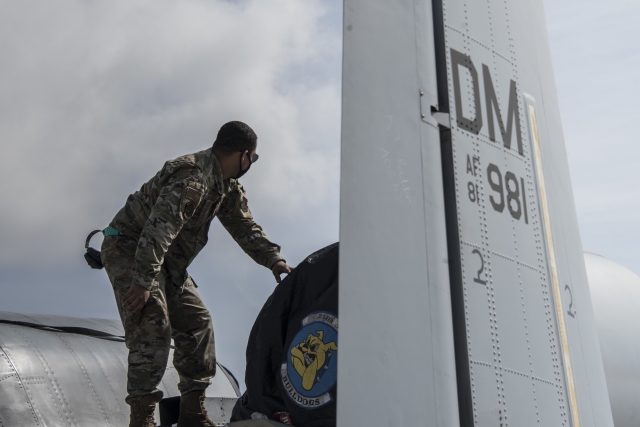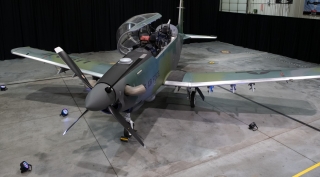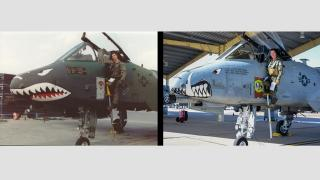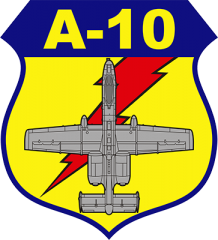 USAF starts charm offensive with its Thunderbolt II
USAF starts charm offensive with its Thunderbolt II
Seven minute reading about the current position of USAF's A-10C Thunderbolt II attack aircraft
This past decade there have been a lot of discussions about one of the main tasks of the USAF; Close Air Support (CAS). Over the years, besides CAS, new affiliated attack aircraft buzzwords were introduced like OA-X, Counterinsurgency, Light Attack, Armed Reconnaissance and Armed Overwatch. As all of those became in place, the USAF was looking for hundreds of new weapon platforms to succeed in particular the A-10C Thunderbolt II. Eventually, besides small numbers of Textron AT-6 Wolverines and Embraer/Sierra Nevada A-29 Super Tucano, which are now in the final stages of being delivered, this never materialised.
 In February 2021, the first, in USAF colours painted, AT-6 Wolverines (no serial numbers known yet) and A-29 Super Tucanos (serials 20-2101 and 20-2102) were presented and sighted. For both the AT-6 and A-29 no exact designations have been given.
In February 2021, the first, in USAF colours painted, AT-6 Wolverines (no serial numbers known yet) and A-29 Super Tucanos (serials 20-2101 and 20-2102) were presented and sighted. For both the AT-6 and A-29 no exact designations have been given.
With recently the new Biden Administration installed, more stakeholders with various statements have come up. Lt. Gen. James Slife, commander Air Force Special Operations Command (AFSOC), spoke recently as the Biden administration reviewed the US military’s global footprint and prepared to advise Congress on reorienting American forces for future conflicts. He stated that new aircraft that can fly reconnaissance missions and bomb enemy forces would be key for the US Special Forces’ future in, for instance, the African continent. Having said that, like more Generals before him the past few years, US Special Operations Command (USSOCOM) has now again planned to conduct flight demonstrations of a handful of aircraft during the coming months. General Slife stated results of those trials will determine the path ahead, but that he hopes to “be in a procurement” of a commercial aircraft that doesn’t require a lengthy development in Fiscal Year 2022. He believes that USSOCOM will be able to demonstrate to the Congress that this is a viable programme and it’s required for the future US operating environment.
The Fairchild Republic A-10 Thunderbolt II will celebrate its 50th birthday in 2022. Its maiden flight was on 10 May 1972. Many thought that after the end of the Gulf War in 1991 this would also mean the end of the A-10. This has turned out differently. The A-10 was specially designed for CAS, which is defined as air action such as air strikes by fixed or rotary-winged aircraft against hostile targets that are in proximity to friendly forces and which requires detailed integration. Compared to today’s A-10C, the A-10 from the seventies seems primitive. The engines are almost the same and the basic airframe has not changed much. Although, internally it has been completely upgraded. The technological advances the A-10 has seen over more than four decades are nothing short of impressive and its value to combatant commanders in the field is unparalleled.
By examining our Scramble database, it reveals that roughly 280 A-10Cs are still operational in the USAF's inventory. While the US top brass is still debating about its future, the A-10 community is following USAF's strategic guidance “Accelerate Change or Lose”. This is accompanied by deployments, missions, exercises and last, but not the least, exposure.
 Recently, the USAF and A-10 community started a charm offensive. While USAF's A-10 Thunderbolt II demoteam recently received a new livery in honour of all the Prisoners of War, servicemen Missing in Action and Veterans of the Vietnam War, it became also known that two Davis-Monthan A-10 fighter pilots were awarded the "MacKay Trophy" by the Chief of Staff of the Air Force Gen. Charles Q. Brown, Jr. Both Lt. Col. Charles Stretch, Jr., and Capt. Alexander Boules received the award for “The most meritorious flight of 2019,” during which the two, with very different levels of experience, quickly launched to support Afghan forces which were being overrun by the Taliban. Then there is Lt. Col. John “Karl” Marks. He is a senior pilot with the 303rd Fighter Squadron based at Whiteman AFB (MO). Lt. Col. Marks is just 100 hours shy of reaching a staggering 7,000 hours in the A-10 Thunderbolt II cockpit. No doubt that he is currently holding the record for most hours in the A-10 of all time. Due to COVID 2019 it is not certain if the "Hawgsmoke" competition will take place in 2021. But it is still planned that this year's competition will be hosted, from 14 April until 17 April, by the "Flying Tigers" 74th Fighter Squadron at Moody AFB next to Valdosta (GA).
Recently, the USAF and A-10 community started a charm offensive. While USAF's A-10 Thunderbolt II demoteam recently received a new livery in honour of all the Prisoners of War, servicemen Missing in Action and Veterans of the Vietnam War, it became also known that two Davis-Monthan A-10 fighter pilots were awarded the "MacKay Trophy" by the Chief of Staff of the Air Force Gen. Charles Q. Brown, Jr. Both Lt. Col. Charles Stretch, Jr., and Capt. Alexander Boules received the award for “The most meritorious flight of 2019,” during which the two, with very different levels of experience, quickly launched to support Afghan forces which were being overrun by the Taliban. Then there is Lt. Col. John “Karl” Marks. He is a senior pilot with the 303rd Fighter Squadron based at Whiteman AFB (MO). Lt. Col. Marks is just 100 hours shy of reaching a staggering 7,000 hours in the A-10 Thunderbolt II cockpit. No doubt that he is currently holding the record for most hours in the A-10 of all time. Due to COVID 2019 it is not certain if the "Hawgsmoke" competition will take place in 2021. But it is still planned that this year's competition will be hosted, from 14 April until 17 April, by the "Flying Tigers" 74th Fighter Squadron at Moody AFB next to Valdosta (GA).
In October 2020 it became known that the USAF had made a decision to upgrade 280 A-10Cs. These should include the continued efforts to enhance the A-10’s capability to operate from austere environments with minimal support. All these will allow for greater readiness and mission ability through tactics improvements.
Earlier Scramble reported about the future of Close Air Support and "USAF and the new Flags". Although a portion of USAF's A-10C inventory had completed its re-winging during July 2019, there are still plans to re-wing 112 A-10Cs. Also planned and foreseen with the new upgrade are a Synthetic Aperture Radar (SAR) pod, Night Vision improvements, Cockpit modernisation, new countermeasures and the option to integrate GBU-39/B and/ or GBU-53/B Stormbreaker Small Diameter Bombs (SDBs).
 It is expected that it will take some time to get a new dedicated Close Air Support/Armed Overwatch aircraft. Eventually, there will be new aircraft within the USAF ranks. It is expected that the A-10, with new capability upgrades, maybe in reduced numbers, will be kept at the forefront of USAF Agile Combat Employment (ACE) CAS missions for at least another two decades.
It is expected that it will take some time to get a new dedicated Close Air Support/Armed Overwatch aircraft. Eventually, there will be new aircraft within the USAF ranks. It is expected that the A-10, with new capability upgrades, maybe in reduced numbers, will be kept at the forefront of USAF Agile Combat Employment (ACE) CAS missions for at least another two decades.
We present you an overview of the current A-10C Thunderbolt II units:
Photos: USAF and Lt. Col. John “Karl” Marks collection

